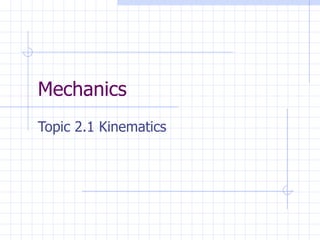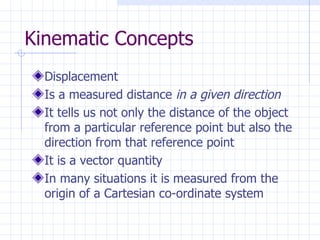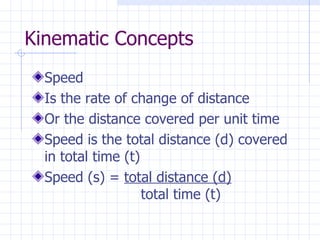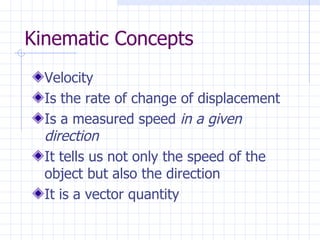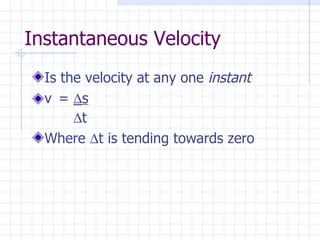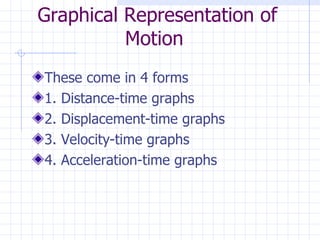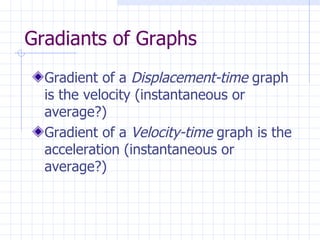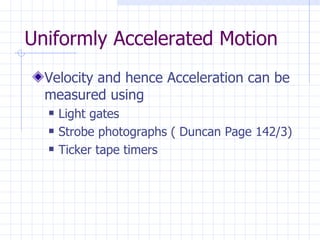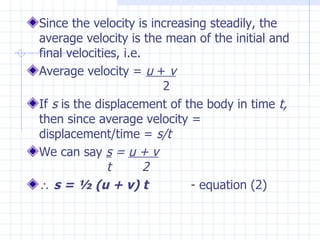This document discusses key kinematic concepts including displacement, speed, velocity, acceleration, average velocity, instantaneous velocity, and uniformly accelerated motion. It defines these terms and discusses how to calculate them using equations of motion. Graphical representations of motion like distance-time graphs and velocity-time graphs are also covered. The effects of air resistance and gravity are summarized.
